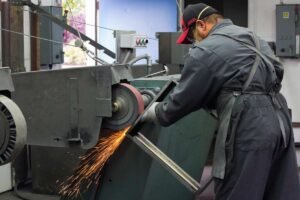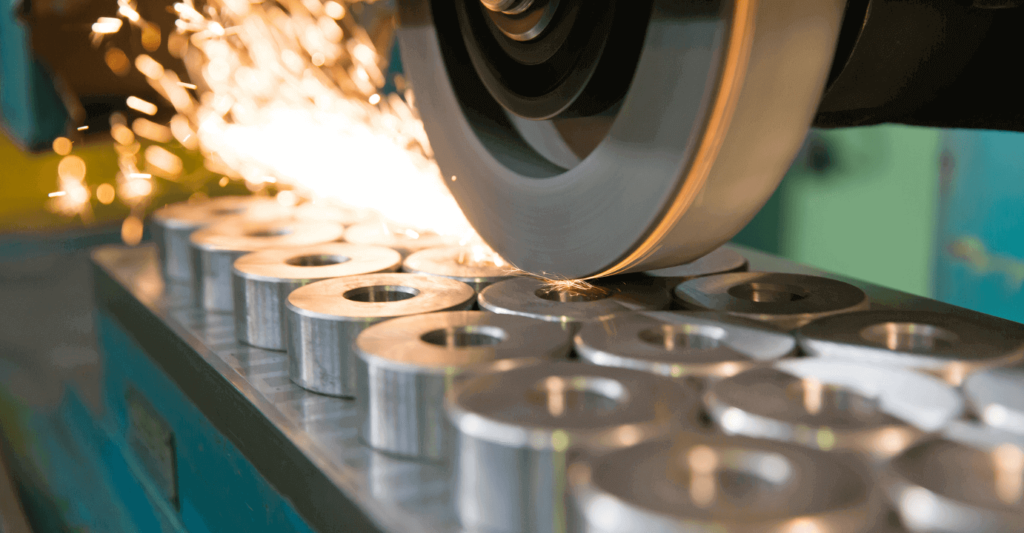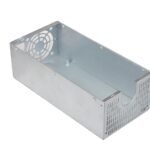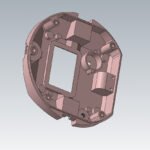Introduction
Custom metal parts need polishing not just for improving their aesthetic appeal but also to facilitate improved functioning and long life. Therefore, it wouldn’t be wrong to say polishing is an interesting combination of art and science. And it is extremely important too! Custom metal surfaces tend to accumulate grime, dirt, and rust, significantly reducing their build quality. This mostly occurs when the custom metal part comes in contact with air. Not just that, high temperature and extensive use can also compromise the metal surface. So, how can you ensure an adequate polishing process? Let’s find out!
Why should you go for a polishing surface finish?
A polishing surface finish provides a reliable protective layer of reflective surface that prevents any kind of contamination or oxidation. The reflective surface also functions effectively to deter any corrosion happening on the surface. The best thing about polishing surface finish is that it can be used over a wide range of metals, especially used in manufacturing processes.
What does a polishing surface finish involve? The process requires the use of abrasive materials over a metal surface. The idea is to remove scratches and nicks from a surface. These scratches are often the result of bumping into other machine parts in the manufacturing process. The abrasive material helps improve the surface’s shine and luster. Later, you will get a mirror-bright finish when you buff the polished surface.
Indeed, the use of abrasives and other compounds over the material might render it useless for high purity applications. But, there are several reasons why you should go for a polished surface finish.
- It significantly improves the cleanability of the custom metal part.
- Removes roughness from the metal surface and makes it smooth.
- Effectively increases the metal’s ability to fight corrosion.
- You get an improved aesthetic appeal without compromising the part’s adhesive properties.
At the same time, you should know that the entire process is quite labor-intensive. Not just that, the abrasives and rubbing compound might stay embedded in the metal. That’s the reason why we recommend hiring professional polishing surface finish services to get the job done.

What are the applications of polishing surface finish?
The most talked-about benefit of polishing surface finish is the high level of smoothness it brings to the surface. In other words, you will not find dirt, grime, or microbes on the surface. The level of cleaning polishing surface finish archives eventually keeps the surface sterile and clean.
Polishing surface finish often finds its application in the medical, aerospace, and electrical industries. It is used in medical equipment manufacturing, reflectors, mirrors, solar energy concentrators, safety mirrors, fire truck bumpers, springs, wire cracks, fasteners for marine applications, and more.
How do you measure surface finish?
But, how do you differentiate between a low-level surface finish and a high-level surface finish? It is crucial to measure and specify the standard of surface finish you apply to a custom metal part. But, there’s a lot of misinformation and confusion making rounds across industries when it comes to determining the stand of surface finish.
To achieve a consistent surface finish on a custom metal part, you will have to factor in variables like grit size, tool load, tool condition, feed rate, traverse rate, condition or metal, and lubricant. Here are some standard values that you can use for reference to determine the surface finish quality on a metal part.
Standard Grit | Ra µin | Ra µm | RMS µin | RMS µm |
| 150 | 27 – 32 | 0.68 – 0.80 | 30 – 35 | 0.76 – 0.89 |
| 180 | 16 – 23 | 0.46 – 0.58 | 20 – 25 | 0.51 – 0.64 |
| 240 | 14 – 18 | 0.34 – 0.46 | 15 – 20 | 0.38 – 0.51 |
| 320 | 8 – 10 | 0.21 – 0.25 | 9 – 11 | 0.23 – 0.28 |
In the above table,
- Standard Grit shows the number of scratches per linear inch of abrasive pad. Surfaces with higher grit are smoother.
- RMS here is defined as Root Mean Square roughness. You can measure the peaks and valleys throughout the surface polishing process. A lower RMS value indicates a smoother surface.
- Ra is defined as the arithmetic mean or average of the peaks and valleys of the surface polishing process. In this, a lower Ra value indicates a smooth finish.

Pros and Cons of different polishing surface finish
You can use different methods to impart polishing surface finish to custom metal parts. In this section, we will discuss them and mention their pros and cons. It will help you figure out the type of polishing surface finish you should add to your manufacturing process.
Mechanical polishing
Mechanical polishing functions by cutting into the surface of the material. It removes the polished convexities and helps obtain a smooth surface finish. You will use materials like sandpaper, flat wheel, abrasive stick, and more to put mechanical polishing into action. Although mechanical polishing is suitable for manual operations, you can use auxiliary tools to improve your precision to achieve a high-quality finish.
| Mechanical Polishing | |
| Pros | Cons |
|
|
Chemical polishing
Chemical polishing surface finish, as the name suggests, involves treating the custom metal surface in a chemical solution. In this, the chemical solution, under the influence of galvanic couples, produces layers of polish on the custom metal parts. The passive layer provides a smooth surface to the metal parts. Here are the pros and cons of the process.
| Chemical Polishing | |
| Pros | Cons |
|
|
Electrolytic polishing
Electrolytic polishing, also known as electrochemical polishing or anodic polishing, has a similar principle to chemical polishing. However, the cathodic reaction isn’t involved in electrolytic polishing, making it different from chemical polishing. Moreover, you achieve a better polishing surface finish through electrolytic polishing. Here are a few pros and cons you might want to know.
| Electrolytic Polishing | |
| Pros | Cons |
|
|
Complete polishing surface finish process for custom metal parts
Now that you are entirely acquainted with polishing surface finish, it’s time we help you learn how it works. Polishing surface finish is a four-step process. Let’s discuss them in detail, shall we?
Roughing
Most metal parts undergo machining to make them usable in the manufacturing process. Machining also involves welding and joining, which often leaves scratch marks and defects on the metal component’s surface. How will you remove them? Just roughen the surface up! Eliminate these defects by selectively roughing up the surface. You can use a roto-orbital sander or other grinding machines with suitable abrasives. If you have to grind a large area, go for abrasive disks with a larger diameter and 1200 or 1500 grain. Use small diameter abrasives to roughen up smaller surfaces.
Polishing
The second step in the process is polishing. Once roughened up, a quick-cut abrasive paste, often a water-based slurry, is applied on the surface with the help of wool berets and polishing sponges or pads. The abrasive paste is well spread, and the surface is later cleaned with the help of a microfibre cloth. Several polishing pads are available in the market. You can use foam polishing pads, microfiber pads, or even wool.
Foam polishing pads are quite common as they are more versatile and easy to use. You might want to check the pad’s porosity before buying them as it can affect its performance. Microfiber pads are more aggressive than foam pads. Make sure you don’t put much pressure on the pad as it won’t absorb enough material. Wool is coarser and imparts a much higher cutting action. However, it is not easy to maintain and isn’t cost-effective, unlike foam polishing pads.
Don’t confuse polishing with lapping. Although they are quite similar in most aspects, polishing systems use a pad and slurry. The surface tension is higher than it is in lapping, both during and after the polishing. Lapping produces a dull, non-reflective surface which we know as matte. It will have a multi-directional lay pattern and a coating effect on the custom metal part. On the other hand, polishing will produce a reflective finish and is usually the second in any polishing surface finish process. It perfectly seals the cuts on the surface with the polishing material.
Brightening
The third step in the polishing surface finish is brightening. In this, we try to achieve polish uniformity across the metal surface. You cannot focus on producing a uniform finish during polishing because you are concentrating entirely on putting polish all over the custom metal part. Hence, you need brightening to spread the polish evenly and recover the component’s initial appearance.
Protecting
We all know what we want from the process – a bright, polished, durable, and stronger custom metal part. That’s the ultimate aim. Before we conclude the process, we will have to ensure that the finish on custom metal parts is well protected. Most manufacturers will apply a protective wax coat to make the polished surface more durable in the manufacturing process.

Seven Best Tips for Polishing Surface Finish
Achieve polishing surface finish for any custom metal parts using these top tips by industry experts. Let’s check them out before we conclude the guide.
- Wear appropriate safety gear before polishing. The polishing surface finish process involves materials and equipment that may cause injuries.
- Always use abrasive discs with polyester films as it helps ensure the correct roughness and achieve more uniformity.
- A unidirectional approach to polishing will not help produce a uniform finish. Vary the directions, especially if you are polishing materials with irregular shapes.
- Don’t add too much polishing compound as it will form grease over the surface.
- Make sure the abrasive material isn’t too hard or too watery. Prepare a perfect abrasive slurry before polishing.
- Polishers should be used at about 900 rpm.
- If you happen to get grease marks on the surface, wipe it off using a dry soft microfiber cloth.
Keep reading!
There you have it. We have shared a comprehensive guide on polishing surface finish for custom metal parts. This post aimed at introducing you to polishing surface finish, its applications, different types, and the process. We hope you now have a firm understanding of the process and what to expect in the process. Did you find this post helpful? Let us know in the comments. If you enjoyed reading this post, don’t forget to check out other informative posts on the blog!




